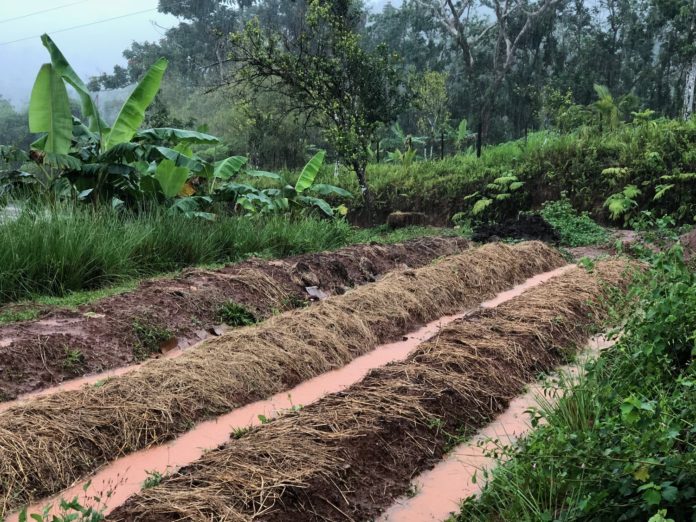Farmers in southeastern Kenya are bouncing back with fruit orchards after years of declining crop harvests due to erratic weather through use of rainwater harvesting technologies.
Working with development organizations such as the Alliance for a Green Revolution in Africa and World Agroforestry, farmers are tapping stormwater runoff from roads flanking their plots and then directing it into basins and ponds that they have created.
From these storage methods, they are able to have a year-round supply of water, even as climate change continues to trigger prolonged droughts in Kenya, according to George Mabuka, a program manager at a local social enterprise called the Cereal Growers Association.
Regenerative agriculture
“It is an innovation that is locally known as regenerative agriculture. Farmers can use this stored water to nurse their fruit orchards and even the food crops they have grown in between the trees,” Mabuka said.
The Food and Agriculture Organization estimates that 40% of the world’s population is living in water-scarce regions. In Kenya which has an annual supply of renewable freshwater below 1,000 cubic meters (35,000 cubic feet) per capita many farmers live in arid or semiarid regions. Water-stressed farmers typically wait for a rainy season, with two cycles per year for growing food crops such as maize, beans, and sorghum, Mabuka said.
In recent years, Kenya has experienced a drought, leading to food insecurity domestically. But conditions are now improving for a growing number of farmers who have adopted water harvesting and storage technologies. The innovations help store rainwater instead of allowing it to drain away into rivers that empty as far as the Indian Ocean.









